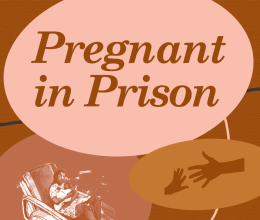The Supreme Court of the United States recently concluded one of the most extreme terms in its history.
In several of its most controversial decisions – including those on abortion, the seperation of church and state, Miranda Rights, environmental protection, and tribal sovereignty – the court overturned long-standing law and precedent. That approach, if applied consistently, could upend many of the constitutional rights we have long taken for granted.
“Supreme Court justices have their jobs for life. We can’t send them packing (short of impeachment, which is limited to high crimes and misdemeanors),” writes ACLU Legal Director David Cole in his Los Angeles Times op-ed.
“What, then, can those of us who feel violated by the court’s raw exercise of power do?” Cole continues. “The court is not immune to the world around it. Consider the antiabortion movement’s response to Roe vs. Wade. They didn’t accept the decision as the last word. For 50 years, they organized, voted and lobbied to ban abortion — and last week, they prevailed. But just as Roe wasn’t the end of the story, nor is Dobbs. All who care about ensuring women’s right to be equal citizens with control over their bodies should take a page from antiabortion activists — and mobilize.”
The path forward is not primarily through SCOTUS. We must turn to the political process and increase pressure on elected officials – especially at the state and local level.
Wisconsin has incredibly vital elections coming up on August 9, 2022, November 8, 2022, and April 4, 2023. In these three elections, Wisconsinites will be electing the state executive offices, State Senate and Assembly, one Senator and eight representatives to the US Congress, local school boards, and one Wisconsin Supreme Court seat. Two of these races – Governor and Wisconsin Supreme Court – are particularly critical to prevent the further erosion of important rights enabled by the recent decisions of SCOTUS.
Wisconsin’s governor will be determined by the August primaries and November elections – a seat with the power to sign proposed legislation that they support into law, and veto legislation they oppose. Recently, the current governor has vetoed bills attacking voting rights, reproductive freedom, protest rights, and the rights of transgender people.
There also will be an election for a Wisconsin Supreme Court justice on April 4, 2023. While the U.S. Supreme Court often gets more attention, rulings from state supreme courts can have implications at least as great for the citizens of those states. They decide what the law means and how to interpret the state constitution.
For example, the Wisconsin Supreme Court recently restricted ballot return options for voters by upholding the ban on ballot drop boxes in a 4-3 decision. The same split court ruled that open records requesters may no longer recover legal costs, increasing the financial barrier to open government. In earlier 4-3 decisions, the court imposed strict rules that limited changes to Wisconsin’s already heavily gerrymandered legislative maps, and then refused to accept maps proposed by Governor Evers even though those maps more closely reflected demographic trends in Wisconsin.
In fact, this court’s past term has seen a record number of 4-3 rulings. These opinions show how every single justice matters.
Although the court is formally nonpartisan, Wisconsin Supreme Court justices come to the court with different perspectives on the law and constitution. And they are elected to 10 year terms – the longest term for any elected official in Wisconsin. That means, whoever will be elected to the seat in April will have an impact on the state’s policy for at least a decade, likely longer.
Whichever Wisconsin governor and Supreme Court justice we elect will be the decision-makers on any upcoming legislation and cases about reproductive freedom, voting rights, and more. Unlike the federal supreme court, we can hold the Wisconsin Supreme Court accountable through our vote.
The battleground for our freedoms is – now more than ever – local. Register to vote at myvote.wi.gov and make a voting plan.


